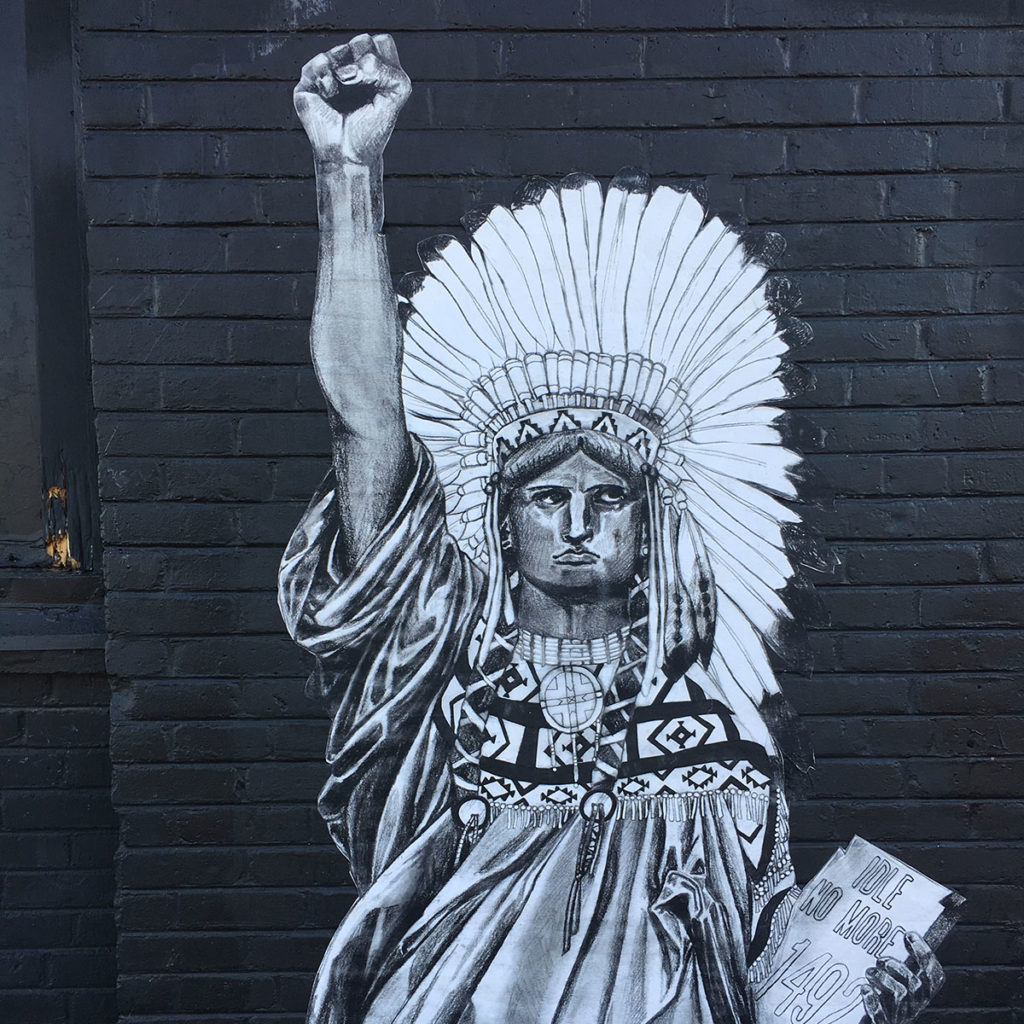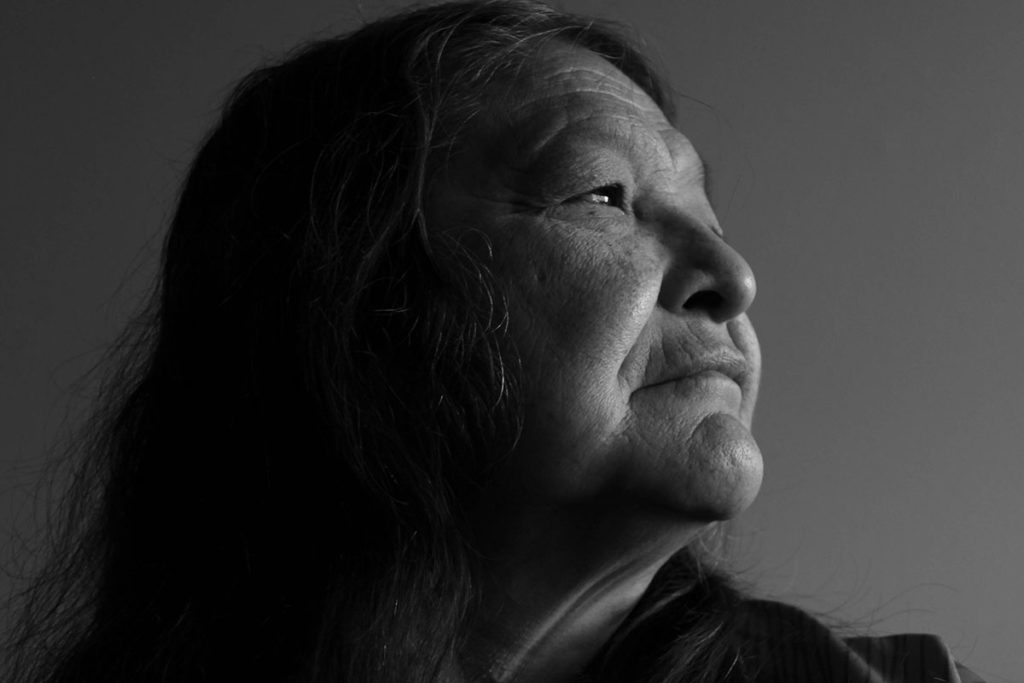
There are various pandemics, some are viral, some are neoliberal, sometimes meeting with deadly results, and sometimes defeated by consistent grassroots efforts, and sometimes life prevails. Recently, the Standing Rock Sioux Tribe won against the Dakota Access Pipeline, DAPL, in Federal Court. The court validated everything that the Tribe has argued against DAPL.
First, came the oil industry, then the pipelines, then the Dakota Access Pipeline, DAPL, was conceived to move fracked oil from North Dakota to Illinois, with a plan of 450 000 barrels (71 544 282,7 liters) flowing through every day. In 2016, the US Army Corps of Engineers (USAGE) approved the project using a Nationwide Permit 12 that allows examining such projects without a full evaluation and without a thorough environmental impact evaluation. The route of the pipeline crossed many sacred lands of Native American Sioux. It also crossed under the Missouri River, the main source of water for the local population. The oil companies have honed their skills at profit-making at all costs. They are also known for their disastrous safety record with millions of dollars spent on fines and reparation. For instance, DAPL’s leading company Sunoco Logistics, spent over $53 million for property damage between 2006 and 2016. Meanwhile, land and water has been polluted, sickening the local population.
For the Sioux Nation situated in North Dakota, DAPL’s environmental damage and disregard for Native rights were unacceptable. They opposed the latest life-threatening actions of the oil industries and their financial investors, pointing to the imminent water pollution with its resulting impact on the land.
Lakota women were fast to organize in the defense of life against the pipeline, the black snake as they called it. Several sites of resistance were established such as the Sacred Spirit and the Oceti Sakowin camps near Standing Rock reservation. These sites saw the largest gathering of the Sioux Nation since little Big Horn in 1876. Many non-native American supporters assembled with Native Americans in resisting the construction of the pipeline. This struggle attracted international attention, with indigenous peoples from other countries showing their solidarity.
Lakota women, men and children and national and international protesters showed the world what an inspired coalition building meant. They opposed the oil industry and its financial supporters’ oafish strategies by articulating their veneration of their environment with the strength of their spiritual invocations and prayers in defense of “mother Earth.” The words Mni Wiconi, water is life, roared from the camps, sacred words which transformed people into water protectors. The beat of their drums were in rhythm with the heartbeat of mother Earth. The water protectors stoically faced the uniformed seemingly unconcerned police and militias who were fully equipped with weapons to hurt the defenders of life.
The Sioux Nation also fought USAGE’s decision in court, demanding the Nationwide Permit 12 be revoked. They wrote to President Obama who first abandoned another deadly project, the Keystone pipeline project, and then before leaving office, hastily, denied the permit for DAPL.
After the inauguration, Donald Trump signed a memorandum to forcibly evacuate the camps to clear the way for the construction of the pipeline. The ultimatum said that total evacuation of the camps would have to be effective on February 22, 2017. The menace was dire. Donald Trump resembled more a predator than a president.
Before leaving the sites, on February 18 to 19, the ceremony “Honoring our grandmothers” was organized. This ceremony was echoed in many indigenous sites around the Americas.
The invitation to Honoring our Grandmothers was clear:
“As Women of Sovereign Nations, Lands, and Waters, we have been given the honor of caring for the earth, the water and all living beings on it.” “We welcome women of all Nations and ages to come together for this special time of prayer, teachings and unity here in Standing Rock, as a powerful movement to acknowledge the sacredness of Unci Maka, Mni Wiconi and the living grandmothers of the Oceti Sakowin.”
“Location has nothing to do with how we pray, we are going to keep fighting these big oil companies even if we have to fight for the rest of our life,” declared one of the participants, a grandmother committed to defending life and children’s future.
And continue fighting they did.
The victory of the Sioux in the Federal court should be an inspiration for many who are fighting for justice. No `pragmatic compromises’ were accepted. The native message is loud and clear: if life is sacred, then the sacred should prevail. A sense of solidarity expanding beyond tribes brought victory on many fronts. Before this decision, Native lawyers lobbied foreign banks that invested in the pipeline to withdraw their support.
In this moment of a global viral crisis, born from the recklessness of neoliberal globalization, maybe it is time to learn some lessons from this fight for the preservation of water as water is life.
Standing Rock Sioux Tribe Chairman Mike Faith declared, “It’s humbling to see how actions we took four years ago to defend our ancestral homeland continue to inspire national conversations about how our choices ultimately affect this planet. Perhaps in the wake of this court ruling the federal government will begin to catch on, too, starting by actually listening to us when we voice our concerns.”
Contrast this hopeful message with other decisions taken by the heartless in power. In mid-March, the governors of Kentucky, South Dakota, and West Virginia signed laws to give more power to the states to protect the oil industry and repress protest against oil and gas pipelines and other infrastructures labeled “key” or “critical.”
We are at the crossroads of two visions of the same crisis. In one vision, the heartless system – with its destructive projects generated devastating impacts such as deforestation, extinction of 60% of species, climate change, elimination of public services for the common good, resurgence of authoritarian regimes serving vested interests – will finally come to a change of paradigm. The other vision keeps the delusional neoliberal short-term view in place. The latter may work until climate change and/or another virus or spill of crude oil challenges neoliberal non-sense.
Maybe this is the time to learn from the unrelenting, uncompromising fight of the Standing Rock Sioux and their allies for the source of life.

(Photo Credit: Taylor Ruecker, Janine Robinson